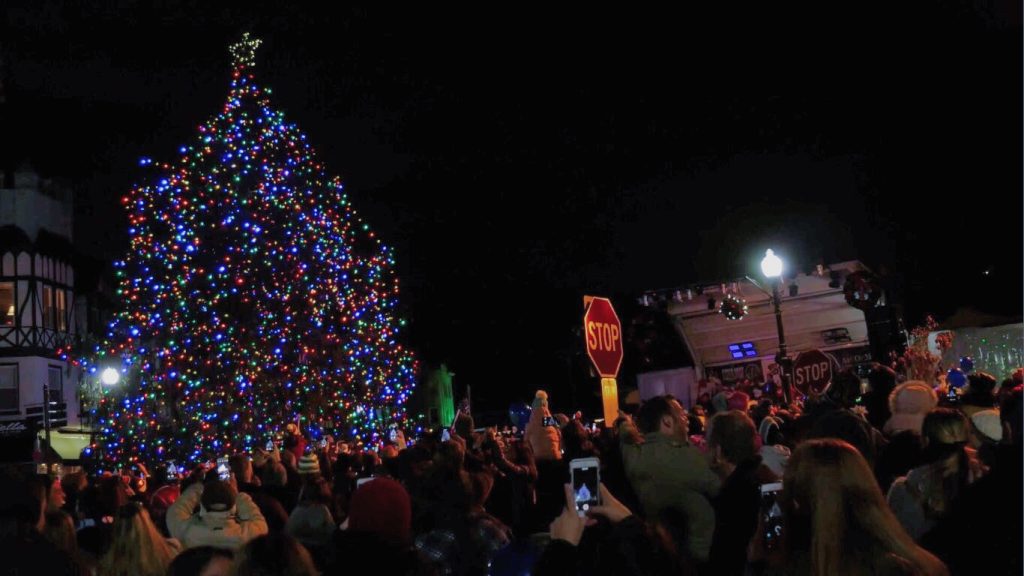An event where, year after year, it brings residents near and far to downtown Ridgewood in the very beginning of December… you guessed it! The annual Ridgewood Christmas tree lighting. Preambled with live performances, and streets flooded with hot cocoa, food, and excitement, the celebration of the lighting of the Christmas tree ushers in holiday cheer and spirit to the town of Ridgewood.
However, have you ever wondered why we have such a massive celebration for the lighting of a Christmas tree? Every year, we shout out the big countdown- the “3, 2, 1…!”-in unison, and cheer loudly when those twinkling colorful lights illuminate the night. This event not only take place in Ridgewood, but across the globe! The question is: why do we do this? And why do we continue to do this?
The origin of lighting Christmas trees traces back to 16th century Germany. Devout Christians would decorate evergreen trees and display them in their homes, as they believed these trees to be a symbol for “life in the dead of winter,” which is what Jesus was said to be. However, protestant reformer Martin Luther is credited to be the one who first added lights to the trees. The story is told that Martin Luther was walking on a starry December night, and was in awe from the brilliance of the stars in the night sky. Inspired by the night sky, he recreated it at home by decorating his Christmas tree with lit candles.
Placing candles on Christmas trees became a widespread tradition in Germany, but did not reach the United States until about 1830. German immigrants carried their traditions from their German homes overseas. The first recorded sighting of a decorated and lit Christmas tree was in Pennsylvania by German settlers. This sight was regarded as eccentric and was, therefore, unaccepted.
However, many Americans later followed the footsteps of German settlers and began bringing decorated, lit Christmas trees into their homes. This was no easy task, however; people had to either hand tie candles to the branches of trees using string, pin the candles down, or melt wax and stick the candles on it. Moreover, if they were successful in attaching the candles, the trees were extremely flammable and a hazard to people’s homes.
When 1882 came along, Edward Johnson, a friend of Thomas Edison and Vice President at his electric light company, invented the first strand of electric Christmas lights. At this point, each light was described to be about the size of a walnut, and required a generator to power. With years of work and experimentation, Johnson and Edison presented these lights to the public market in 1890. These lights grew ample attention from across the nation- especially when Grover Cleveland, the President of the United States, had them strung on the White House tree in 1895. However, it was difficult for the average American to get these on their trees at home because one, many did not yet have electricity, and two, it would cost a total of over $300 (the equivalence of roughly $7,600 today!) to get the generator, have them installed, get the lights themselves, etc.
However, over time, electricity became much more developed and common until nearly every American home had it. The Christmas lights themselves, too, developed over time, most notably in the year 1903. That year, General Electric created the “festoon,” which was the first pre-wired string of Christmas lights with a plug for a wall socket presented to the public. They attempted to get a patent, but they were rejected, leaving a large market open for competitors to jump in. The Christmas tree light industry flourished and became more affordable over time such that all Americans could afford a strand of twinkling lights to illuminate their homes and trees.
The Christmas light tradition continues to grow and develop in the ever-changing modern world. In 2011, Americans spent roughly $6 billion on Christmas decorations, ranging from the conventional Christmas lights to light up inflatable Santa Clauses. Christmas light drive throughs, Christmas light shows, and mass Christmas tree lighting ceremonies have become ever so popular. It is astounding that such a simple practice in 16th century Germany transformed into such a prodigious and widespread tradition.
Virginia Morley
staff writer
Graphic: Brendan Keane

